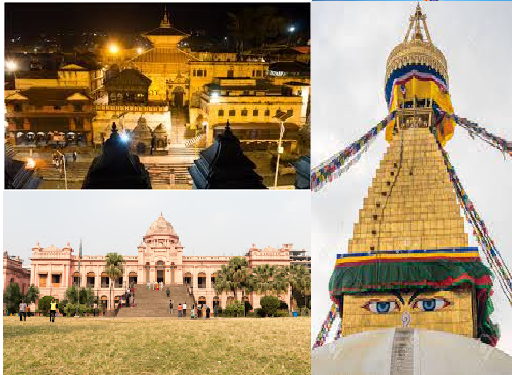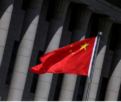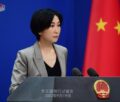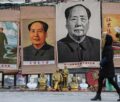REVISITING INDIA’S NEIGHBOURHOOD POLICY

By Tridivesh Singh Maini, FDI Visiting Fellow
Key Points
*India faces serious challenges in its neighbourhood.
*While all eyes have been on New Delhi’s tensions with Nepal, China has bolstered its economic and strategic links with Dhaka, and Colombo-Beijing ties already are robust.
*There have been signs of a thaw between New Delhi and Kathmandu, and India has worked to strengthen its economic ties with Bangladesh and Sri Lanka, and to provide assistance.
•New Delhi needs to look at its neighbourhood beyond the China factor, however, resolve domestic problems and address economic challenges.
Summary
While in recent times rising tensions between New Delhi and Beijing have attracted the attention of regional and other observers, it is noteworthy that India’s ties with its neighbouring countries in the South Asian Association for Regional Co-operation (SAARC) grouping, especially those with Nepal, have rapidly deteriorated. It all began in May 2020, when Nepal objected to the inauguration of the extension of a road from the Indian state of Uttaranchal to Lipulekh near the India-Nepal-China junction by Indian Defence Minister Rajnath Singh. The aim of the project, an 80 kilometre-long road, was to make the journey of Hindu pilgrims to the Kailash Mansarovar shrine in Tibet easier. Nepal reacted strongly to the road extension, stating that according to the Sugauli Treaty of 1816, Lipulekh and other territories east of the Mahanadi River – Limpiyadhura and Kalapani – belonged to Nepal, and that Kathmandu had reminded India of that in November 2019.
Analysis
Redrawing the Map
Recently attempts have been made to reduce tensions between Kathmandu and Delhi. A video-conference took place between Nepal’s Foreign Secretary, Shankar Das Bairagi, who led a team of officials and an Indian team led by Ambassador Vinay Mohan Kwatra. A slew of ongoing Indian projects in Nepal was reviewed at the meeting.
Nepal Prime Minister KP Sharma Oli also called Indian PM Narendra Modi, on 15 August, on the occasion of India’s seventy-third independence anniversary. A statement released by India’s Ministry of External Affairs stated that:
‘The leaders expressed mutual solidarity in the context of the efforts being made to minimize the impact of the Covid-19 pandemic in both countries.’
Nepal’s parliament then decided to redraw the India-Nepal boundary so as to include the territories of Limpiyadhura, Lipulekh and Kalapani within its territory. Following that decision, in June 2020, Nepalese Armed Police Force (NAPF) personnel fired upon a group of Indian citizens at the India-Nepal border, killing one person and injuring two others. They detained a third Indian citizen, who was released later.
Statements by Nepalese PM
In May 2020, Nepalese Prime Minister Oli made strong statements against India. ‘Indian virus is more dangerous than the Chinese virus,’ he remarked. That statement was interesting in the light of the fact that India had provided assistance to Nepal to counter the Covid-19 pandemic that originated in China. In June, Oli accused India of plotting to overthrow his government. According to many observers, Oli’s statements were driven by the power struggle within his own National Communist Party (NCP).
New Delhi hinted, in turn, that Beijing was behind Nepal’s aggressive anti-India stance. Given Beijing’s proclivity towards increasing its regional influence and diminishing that of its perceived competitors, especially India’s, there is an elevated degree of probability that there is some truth to New Delhi’s claim.
China-Bangladesh Ties
A few points need to be borne in mind. The size of China’s economy gives it a big advantage over all of South Asia, not just the smaller regional countries, such as Nepal or Pakistan. Only recently, China offered Bangladesh major trade concessions, such as exempting 97 per cent of that country’s exports to China from tariffs. While Bangladesh-India connectivity and economic links have improved in recent years, China has, since 2015, overtaken India to become Bangladesh’s largest trading partner.
Adding to India’s concerns, in 2019, Bangladesh handed over the construction of a submarine base in Cox’s Bazaar to China. That development can only further strengthen the security ties between the two countries and fits in well with Beijing’s strategic goals.
Interestingly, the Bangladeshi Prime Minister, Sheikh Hasina, recently held a telephone conversation with her Pakistani counterpart, Imran Khan, that was attributed by many to Beijing’s mediation between the two leaders, who do not see eye-to-eye. While New Delhi hailed Hasina for not having reacted to Mr. Khan’s raising of the Kashmir issue, some Indian analysts and policymakers suggested that Beijing was trying to bring about a thaw between Dhaka and Islamabad. New Delhi provided Dhaka with ten railway locomotives as part of its policy of bolstering its “neighbourhood first” policy, and mitigating Dhaka’s increasing proximity towards Beijing. New Delhi has, nevertheless, warned Dhaka against becoming a pawn in the power games of the larger regional economies.
Warming China-Sri Lanka Links
Another instance of China’s increasing influence in South Asia is its ties with Sri Lanka. In recent years, Colombo has tried to balance its relationships with Beijing and New Delhi. Mahinda Rajapaksa, the current PM, led his party, the Sri Lanka Podujana Peramuna, to a clean sweep in the recently-held general elections, winning a two-thirds majority along with his allies. Rajapaksa took the oath of office on 9 August. During his previous tenure as President (2005-15), his administration grew close to China, and eventually led Sri Lanka into China’s now-infamous “Debt Trap Diplomacy” after borrowing excessively from Beijing to develop the Hambantota Project. The government that succeeded Rajapaksa’s had no option but to lease the port for a period of 99 years to China in December 2017 when it found itself unable to service its Chinese debt. Rajapaksa returned to power in 2019, with himself as caretaker PM and his brother, Gotabaya Rajapaksa, as President. The first official overseas visit that Gotabaya Rajapaksa made was to New Delhi, ostensibly signaling that he wanted to balance Colombo’s ties between Beijing and New Delhi. In a media interview, Mahinda Rajapaksa stated, ‘Sri Lanka follows a non-aligned foreign policy with all nations. Both India and China are valued friends.’
To mitigate the economic drawbacks of the Covid-19 pandemic on the Sri Lankan economy, China has provided further loans to Sri Lanka to enable it to service its existing loans. Beijing transferred US$500 million (approx. $700 million) to Colombo in April 2020; another tranche of US$800 million ($1.1 billion) will be provided in the second half of 2020. Seeing Colombo’s increasing ties to Beijing under the Rajapaksas, New Delhi has finalised a US$400 million ($561 million) swap facility under the SAARC framework, and is also considering a request for a swap of US$1.1 billion ($1.54 billion).
Revival of the SAARC Process
China has operated behind the scenes as an intermediary to enhance Pakistan’s ties with other SAARC countries, and has worked to persuade the smaller countries in the region to revive the SAARC process. Since 2017, Pakistan has issued calls to revive the SAARC process. Nepal, Bangladesh and Sri Lanka have, similarly, spoken in recent times about reviving the SAARC process. The objective is clear: by making Pakistan more important than India in the regional grouping, New Delhi can be effectively sidelined regionally, thus reducing its importance and, subsequently, its influence there. That would create a vacuum that Pakistan or, alternatively, a coalition of Pakistan, Bangladesh, Nepal and Sri Lanka, all countries that are becoming increasingly dependent on China and therefore susceptible to Chinese influence, could fill.
While Beijing’s economic influence can only be countered by India providing assistance to its South Asian neighbours, New Delhi needs to be more understanding of the concerns and sensitivities of those countries, and cannot dictate their policies to them. That would be construed as interference in their affairs. Second, New Delhi needs to take care that its domestic narrative does not harm ties with its neighbours. Third, while ties with Pakistan may be at their lowest ebb at this time, New Delhi need not be totally closed to the SAARC process in the long run. In a post-Covid-19 world, SAARC countries can explore new areas of co-operation; for instance some commentators have suggested that the issues of South Asian workers in the Gulf could be brought under the ambit of SAARC.
Finally, New Delhi also needs to look at the revival of some sort of engagement with Islamabad. India and Pakistan should not be closed to the revival of bilateral trade through the Wagah-Attari land crossing. If goods from Afghanistan can enter India via the land-crossing, there is no reason why the two countries cannot explore bilateral trade that will benefit both economies. The opening of the Kartarpur Corridor in November 2019 had raised hopes of some sort of thaw, possibly enhanced economic links between India and Pakistan but that was not to be. In the current environment, that may seem unlikely, but it not impossible.
In conclusion, it is important for India to look at ties with its neighbours beyond the prism of China and Pakistan, and make the necessary changes to its foreign policies. There can also be no escaping from the fact that for India to enhance ties not just with its neighbours in SAARC, but also with other developing countries, New Delhi needs to get its own economy back on track. This would put it in a better position to provide financial assistance to those countries, and also reduce their dependence upon China. (Courtesy: FDI)
*The author is a New Delhi-based Policy Analyst and FDI Visiting Fellow.
-
Book Shelf
-
 Book Review
DESTINY OF A DYSFUNCTIONAL NUCLEAR STATE
Book Review
DESTINY OF A DYSFUNCTIONAL NUCLEAR STATE
- Book ReviewChina FO Presser Where is the fountainhead of jihad?
- Book ReviewNews Pak Syndrome bedevils Indo-Bangla ties
- Book Review Understanding Vedic Equality….: Book Review
- Book Review Buddhism Made Easy: Book Review
- Book ReviewNews Elegant Summary Of Krishnamurti’s teachings
- Book Review Review: Perspectives: The Timeless Way of Wisdom
- Book ReviewNews Rituals too a world of Rhythm
- Book Review Marx After Marxism
- Book Review John Updike’s Terrorist – a review
-
-
Recent Top Post
-
 NewsTop Story
What Would “Total Victory” Mean in Gaza?
NewsTop Story
What Would “Total Victory” Mean in Gaza?
-
 CommentariesTop Story
The Occupation of Territory in War
CommentariesTop Story
The Occupation of Territory in War
-
 CommentariesTop Story
Pakistan: Infighting in ruling elite intensifies following shock election result
CommentariesTop Story
Pakistan: Infighting in ruling elite intensifies following shock election result
-
 CommentariesTop Story
Proforma Polls in Pakistan Today
CommentariesTop Story
Proforma Polls in Pakistan Today
-
 CommentariesTop Story
Global South Dithering Away from BRI
CommentariesTop Story
Global South Dithering Away from BRI
-
 News
Meherabad beckons….
News
Meherabad beckons….
-
 CommentariesTop Story
Hong Kong court liquidates failed Chinese property giant
CommentariesTop Story
Hong Kong court liquidates failed Chinese property giant
-
 CommentariesTop Story
China’s stock market fall sounds alarm bells
CommentariesTop Story
China’s stock market fall sounds alarm bells
-
 Commentaries
Middle East: Opportunity for the US
Commentaries
Middle East: Opportunity for the US
-
 Commentaries
India – Maldives Relations Nosedive
Commentaries
India – Maldives Relations Nosedive
-
AdSense code



















